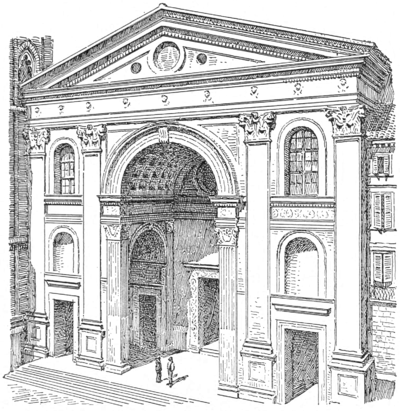and has no correspondence in its parts with those of the building itself. In outline it is an unbroken rectangle crowned with a pediment. A very shallow order of Corinthian pilasters divides it into a wide central bay and two narrow ones. A great arch over a smaller order opens into a barrel-vaulted recess, on the three sides of which the entablature is returned. A rectangular portal, with square jambs and a cornice, opens into the nave, and

Fig. 19.—Façade of Sant' Andrea, Mantua.
an arch reaching to the entablature opens into the lateral compartment on each side, and each of these compartments has a barrel vault with its axis perpendicular to that of the great central one. The entablature of the small order is carried across the front of each lateral bay, dividing it into two stages, and the great order rises through it, embracing both stages, and forming an early instance of the so-called colossal order that became common in the later Renaissance. The great order is raised on

